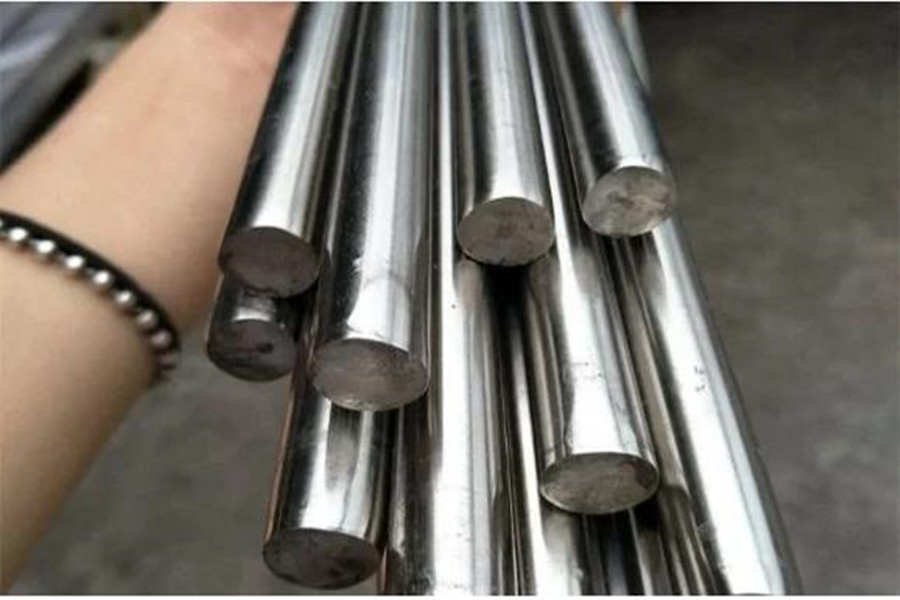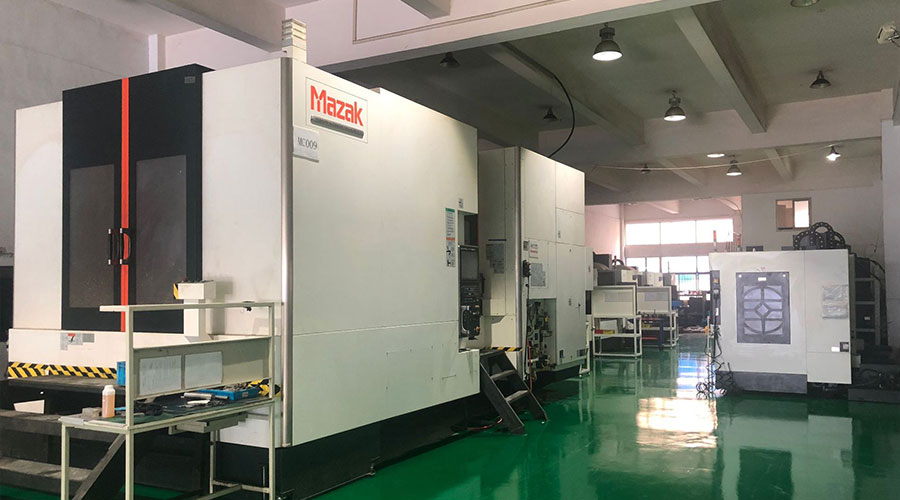People often think that magnets absorb stainless steel materials to verify their quality and authenticity. They are not attractive and non-magnetic. They are considered to be good and genuine; if they are magnetic, they are considered to be counterfeit products. In fact, this is an extremely one-sided and impractical method of identifying errors.
1. What kind of steel is stainless steel?
Stainless steel is a type of steel, steel refers to the content of carbon (C) below 2%, called steel, more than 2%
It’s iron. The addition of chromium (Cr), nickel (Ni), manganese (Mn), silicon (Si), titanium (Ti), molybdenum (Mo) and other alloying elements in the smelting process improves the performance of the steel and makes the steel corrosion-resistant. (That is, no rust) is what we often call stainless steel.
2. Why are there different steel grades for stainless steel?
In the smelting process of stainless steel, due to the different types of added alloying elements, the amount of addition of different varieties is different.
Its characteristics are also different. In order to distinguish them, different steel grades are added. The following is a table of the “alloying elements” content of different steel grades of commonly used decorative stainless steels for reference only:
Steel Grade Carbon (C) Silicon (Si) Manganese (Mn) Phosphorus (P) Sulfur (S) Chromium (Cr) Nickel (Ni) Molybdenum (Mo) Copper (Cu)
304 ≤0.08 ≤1.00 ≤2.00 ≤0.045 ≤0.03 18-20 8-10
301 ≤0.15 ≤1.00 ≤2.00 ≤0.045 ≤0.03 16-18 6-8
202 ≤0.15 ≤1.00 7.5-10 ≤0.05 ≤0.03 17-19 4-6
201 ≤0.15 ≤1.00 5.5-7.5 ≤0.05 ≤0.03 16-18 3.5-5.5
3. What kind of stainless steel is not easy to rust?
There are three main factors affecting stainless steel corrosion:
One: the content of alloying elements, generally speaking, the content of chromium in 10.5% steel will not rust easily. Chromium nickel
The higher the content, the better the corrosion resistance. For example, the content of nickel for 304 material is 8-10%, and the content of chromium reaches 18-20%. Such stainless steel will not rust under normal circumstances.
Second: The smelting process of the manufacturer will also affect the corrosion resistance of stainless steel. A large stainless steel plant with good smelting technology, advanced equipment and advanced technology can guarantee the control of alloying elements, the removal of impurities, and the control of the cooling temperature of the billet. The CNC WeChat public account cncdar therefore has stable and reliable product quality and good internal quality. , Not easy to rust. On the contrary, some small steel mills have backward equipment and technology. During the smelting process, impurities cannot be removed, and the products produced will inevitably rust.
3: the external environment, a dry and ventilated environment is not easy to rust. However, the air humidity is high, continuous rainy weather, or the environment with high pH in the air is easy to rust. 304 stainless steel, if the surrounding environment is too bad, it will rust.
4. Stainless steel is without magnetism, is it good stainless steel without magnetism?
If the microstrip is magnetic, isn’t it 304?
Many customers go to the market to buy stainless steel and bring a small magnet.
It is good stainless steel. Without magnetism, there will be no rust. In fact, this is a misunderstanding. The non-magnetic stainless steel strip is determined by the structure of the structure. During the solidification process, the molten steel will form “ferrite” due to the different solidification temperature.

Stainless steels with different structures such as “austenite” and “martensite”, among which “ferrite” and “martensite” stainless steels are all magnetic. The “austenitic” stainless steel has good comprehensive mechanical properties, process performance and weldability, but only in terms of corrosion resistance, the magnetic “ferritic” stainless steel is stronger than the “austenitic” stainless steel.
At present, the so-called 200 series and 300 series stainless steels with high manganese content and low nickel content in the market are not magnetized. The CNC WeChat public number cncdar has a large gap with 304 with high nickel content. On the contrary, 304 has been stretched and annealed. Process treatments such as polishing, casting, etc. will also have micro-magnetism. Therefore, it is a misunderstanding and unscientific to judge the quality of stainless steel without magnetism.
5. Why does stainless steel rust?
When brown rust spots (spots) appeared on the surface of stainless steel, people were surprised: “Stainless steel does not rust, and rust is not stainless steel. It may be that there is a problem with the steel.” In fact, this is a one-sided misconception about the lack of understanding of stainless steel. Stainless steel can also rust under certain conditions.
Stainless steel has the ability to resist atmospheric oxidation, that is, non-rust, and it also has the ability to resist corrosion in media containing acid, alkali and salt, that is, corrosion resistance. However, the size of its anti-corrosion ability varies with the chemical composition of the steel itself, the mutual state, the use conditions and the type of environmental media.
Such as 304 material, in a dry and clean atmosphere, it has absolutely excellent corrosion resistance, but it is moved to the seaside area, in the sea fog containing a lot of salt, it will quickly rust. Therefore, it is not any kind of stainless steel, which is corrosion-resistant and does not rust at all times.
Stainless steel relies on a very thin, strong, dense and stable chromium-rich oxide film (protective film) formed on its surface to prevent oxygen atoms from continuing to penetrate and continue to oxidize. The CNC WeChat public number cncdar obtains the ability to resist corrosion. Once for some reason, the film is continuously destroyed, the oxygen atoms in the air or liquid will continue to infiltrate or the iron atoms in the metal will continue to separate out, forming loose iron oxide, and the metal surface will also be continuously affected. Rust. There are many forms of damage to this surface film, and the following are more common in daily life:
1. The surface of stainless steel stores dust containing other metal elements or attachments of heterogeneous metal particles.
In the air, the condensed water between the attachment and the stainless steel connects the two to form a micro battery, triggering an electrochemical reaction.
If the protective film is damaged, it is called electrochemical corrosion.
2. Organic juice (such as melons, vegetables, noodle soup, etc.) adheres to the surface of stainless steel, which constitutes
Organic acids will form organic acids to corrode metal surfaces for a long time.
3. The surface adhesion of stainless steel contains acid, alkali and salt substances (such as alkali water and lime water spray test on the decoration wall).
Localized corrosion.
4. In polluted air (atmosphere containing a lot of sulfides, oxides, and hydrogen oxides), encounter condensed water,
Sulfuric acid, nitric acid, and acetic acid liquid spots are formed, causing chemical corrosion.
The above conditions can cause damage to the protective film on the stainless steel surface and cause corrosion. Therefore, in order to ensure that the metal surface is permanently bright and not rusted, we recommend:
① The surface of decorative stainless steel must be cleaned and scrubbed frequently to remove attachments and eliminate external factors that cause corrosion.
② There is a kind of stainless steel made of 201 and 202 on the market that is easy to rust in coastal areas and is suitable for use in an environment without industrial pollution and air corrosion.
③ Use 304 stainless steel in coastal areas, which can resist seawater corrosion.
6. Once the stainless steel has rust spots, how to deal with it?
a) Chemical method:
Use pickling paste or spray to assist the re-passivation of the rusted parts to form a chromium oxide film to restore corrosion resistance
Ability, after pickling, in order to remove all contaminants and acid residues, it is very important to rinse properly with clean water. After all treatments, re-polishing with polishing equipment and sealing with polishing wax. For those with slight rust spots, you can also use a 1:1 gasoline and engine oil mixture to wipe off the rust spots with a clean cloth.
b) Mechanical method:
Sandblasting, using glass or ceramic particle shot blasting, annihilation, brushing and polishing. It is possible to use mechanical methods
It can wipe off the pollution caused by the previously removed materials, polishing materials or annihilation materials. All kinds of pollution, especially foreign iron particles, can become a source of corrosion, especially in humid environments. Therefore, mechanically cleaned surfaces should be properly cleaned under dry conditions. The use of mechanical methods can only clean the surface, and cannot change the corrosion resistance of the material itself. Therefore, it is recommended to re-polishing with polishing equipment after mechanical cleaning and sealing with polishing wax.
Link to this article: Why does stainless steel rust?
Reprint Statement: If there are no special instructions, all articles on this site are original. Please indicate the source for reprinting:https://www.cncmachiningptj.com/,thanks!
 PTJ® provides a full range of Custom Precision cnc machining china services.ISO 9001:2015 &AS-9100 certified. 3, 4 and 5-axis rapid precision CNC machining services including milling, sheet metal to customer specifications,Capable of metal & plastic machined parts with +/-0.005 mm tolerance.Secondary services include CNC and conventional grinding, laser cutting,drilling,die casting,sheet metal and stamping.Providing prototypes, full production runs, technical support and full inspection.Serves the automotive, aerospace, mold&fixture,led lighting,medical,bicycle, and consumer electronics industries. On-time delivery.Tell us a little about your project’s budget and expected delivery time. We will strategize with you to provide the most cost-effective services to help you reach your target,Welcome to Contact us ( [email protected] ) directly for your new project.
PTJ® provides a full range of Custom Precision cnc machining china services.ISO 9001:2015 &AS-9100 certified. 3, 4 and 5-axis rapid precision CNC machining services including milling, sheet metal to customer specifications,Capable of metal & plastic machined parts with +/-0.005 mm tolerance.Secondary services include CNC and conventional grinding, laser cutting,drilling,die casting,sheet metal and stamping.Providing prototypes, full production runs, technical support and full inspection.Serves the automotive, aerospace, mold&fixture,led lighting,medical,bicycle, and consumer electronics industries. On-time delivery.Tell us a little about your project’s budget and expected delivery time. We will strategize with you to provide the most cost-effective services to help you reach your target,Welcome to Contact us ( [email protected] ) directly for your new project.
Link to this article:Why does stainless steel rust?
Reprint Statement: If there are no special instructions, all articles on this site are original. Please indicate the source for reprinting.:Cut Wiki,Thanks!^^
